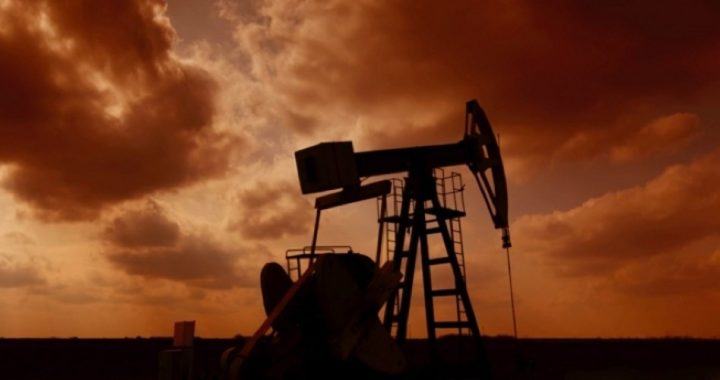
As crude oil prices continue their breath-taking fall, the ripple effect is beginning to reach far beyond the gas pump. On Friday crude oil dropped below $60 a barrel, causing some experts to predict $55 a barrel the following week and $40 a barrel within a few months.
That is putting pressure on oil producers to service their massive debts — some $550 billion incurred in the last five years — and scaring bond investors who are now looking to sell.
It’s a mania, said Tim Gramatovich of Peritus Asset Management who oversees a bond portfolio of $800 million: “Anything that becomes a mania — ends badly. And this is a mania.”
Bill Gross, who used to run PIMCO’s gigantic bond portfolio and now advises the Janus Capital Group, explained that “there’s very little liquidity” in junk bonds. This is the language a bond fund manager uses to tell people that no one is buying, everyone is selling. Gross added: “Everyone is trying to squeeze through a very small door.”
Bonds issued by individual energy developers have gotten hammered. For instance, Energy XXI, an oil and gas producer, issued more than $2 billion in bonds just in the last four years and, up until a couple of weeks ago, they were selling at 100 cents on the dollar. On Friday buyers were offering just 64 cents. Midstates Petroleum’s $700 million in bonds — rated “junk” by both Moody’s and Standard and Poor’s — are selling at 54 cents on the dollar, if buyers can be found.
For some the declines are even more precipitous. For example, Sanchez Energy Corporation issued $1.15 billion in bonds just a few months ago, and they’ve already lost a quarter of their value as investors try to squeeze through Gross’ tiny door.
The carnage in energy junk bonds is expected to end badly with issuers, even if oil stabilizes at $55 a barrel. Deutsche Bank said on December 8 that a third of those producers who issued junk bonds to finance their exploration and development efforts will default on them. And when banks review those companies’ downwardly-revised estimated reserves in March and April, the credit that has been supporting those efforts will likely be greatly restricted if not turned off altogether.
Major players are also feeling the pinch and are reacting to it. Conoco/Phillips said it would be cutting its capital investment in energy development by 20 percent next year, mostly in the Permian Basis in Texas and the Niobrara formation in Colorado. Oasis Petroleum has already announced it’s cutting its capital expenditures next year by 44 percent. Chevron, which usually announces its capex plans in the middle of December, has put off that announcement until after the first of the year when more data will be available on which to make a decision.
The U.S. oil rig count, which hit a high of 1,609 in October, has started to decline in response to the drop in crude oil prices. Baker Hughes, an oil field services company, said last week that the rig count had dropped to 1,546 while Genscape estimates it will drop below 1,100 by August, if not sooner. If that estimate is correct, rig count will have declined by one-third in response to plummeting oil prices.
Another factor impacting developers is that they don’t receive the “market-quoted” price for their oil. After paying for lifting and transportation costs, usually by rail or tanker truck, they receive less, perhaps as much as $15 a barrel less. This makes the break-even analysis for smaller producers even more daunting.
And the contagion is spreading. Companies like Verizon Communications and HCA Holdings (the hospital operator) have seen their bond prices drop as well. There is no brick wall separating energy bonds from other high-yield bonds. If prices stabilize at their current level, that contagion might be limited, according to Edward Marrinan of RBS Securities. “But,” he added, “if we see a further fall in prices, there will have to be a reaction in the broader market as problems will spill out and more segments of the high-yield space will feel the pain [as well.]”
A chart of the S&P Oil & Gas Exploration & Production ETF that reflects bond prices across the energy sector reveals a drop from $62 on November 21 to under $44 on December 12. That’s a 29-percent drop in less than a month.
Blame for the ripple effect of plunging crude oil prices and the pain this is causing can be placed squarely on the shoulders of the Federal Reserve. In a remarkably candid article in Bloomberg, writers Christine Idzelis and Craig Torres noted:
The Fed’s decision to keep benchmark interest rates at record lows for six years has encouraged investors to funnel cash into speculative-grade securities to generate [better] returns.
That’s the definition of a Fed-fueled bubble that’s now bursting, with impacts all across the economy yet to be fully felt. The energy industry is like an ocean liner that takes miles of ocean to execute a one-eighty. Oil will continue to gush from America’s oil fields as producers continue to produce from wells already drilled and projects already begun months ago. Gasoline prices at the pump will continue to decline, offsetting to some extent the impending damage being wrought in the junk-bond market. With a projected one-third fewer rigs operating by next summer, and oil prices possibly touching $40 a barrel before finding a bottom, consumers will continue to enjoy lower prices at the pump. Investors, however, will find it increasingly difficult to squeeze themselves through that tiny exit in their efforts to avoid experiencing the risk they assumed in their search for yield.
A graduate of an Ivy League school and a former investment advisor, Bob is a regular contributor to The New American magazine and blogs frequently at www.LightFromTheRight.com, primarily on economics and politics. He can be reached at [email protected]



